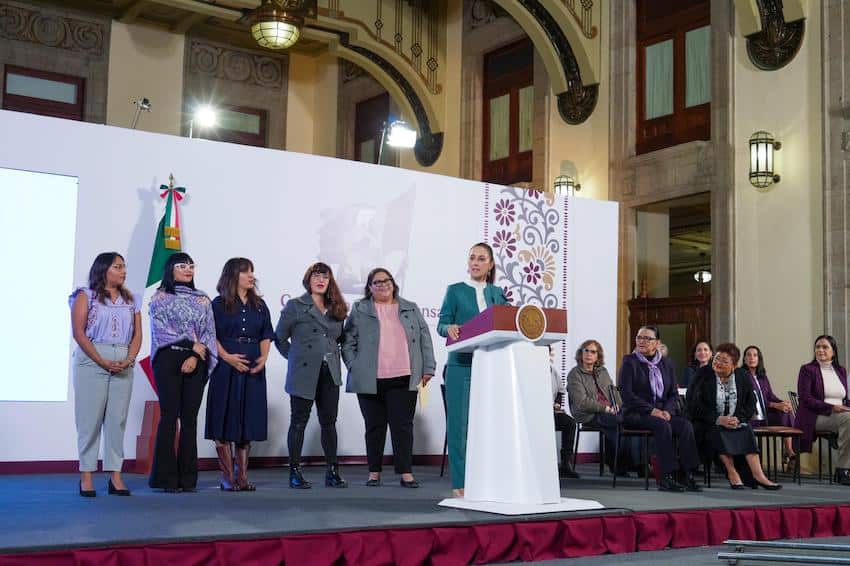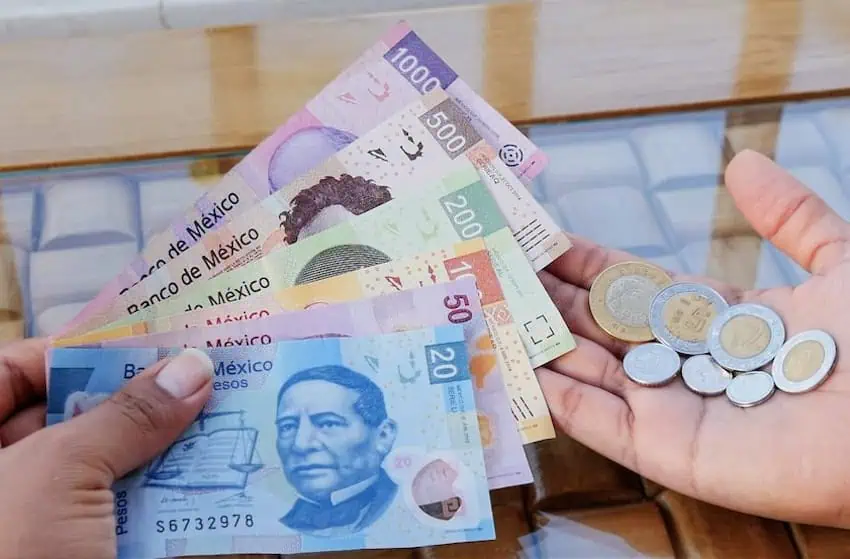I think many people would be surprised to learn that the minimum wage in Mexico is currently around US$13 per day in most parts of the country.
Perhaps more surprising is that this number shows a significant increase over the last few years. Former president AMLO made small changes to the minimum wage in Mexico as a signature initiative of his administration, doubling the minimum wage compared to the start of his six-year term in 2018. A recent report showed that Mexico showed the highest minimum wage increase. in minimum wages in 38 OECD countries since 2020.
Likewise, it is estimated that the number of Mexicans living in poverty has decreased by almost nine million since 2020.
Recently, newly elected President Claudia Sheinbaum announced that further minimum wage increases would be a key part of her platform, with the aim of increasing it by an average of 12% per year over her six years in office. He has set a minimum wage target of 10,000 pesos per month (roughly $500 USD/month) by the end of his term.
Additionally, new laws have recently been proposed to ensure that annual increases in the minimum wage always exceed the rate of inflation.

For those living in the United States, I understand why there is a healthy dose of cynicism towards the concept of a minimum wage.
The federal minimum wage in the United States is still only $7.25/hour. Political gridlock has kept the minimum wage at this level since 2009 – despite significant inflation since then.
As a result, many cities and states in the US have enacted their own laws regarding minimum wages, making the federal rate less relevant. In fact, it is estimated that only 1.3% of all hourly workers, the lowest percentage ever recorded, actually earn minimum wage.
But in Mexico, things are very different.
It is estimated that nearly 40% of the workforce earns minimum wage or less across the country. I’ll repeat that sentence again because I think it’s very important: nearly 40% of Mexico’s workforce earns less than $13/day.
Perhaps these statistics shed more light on why our team at MND is so passionate about our role in helping shape the narrative about Mexico, and helping drive more investment and tourism to the country. There is still a long way to go to reduce the number of working poor that many foreigners don’t see beyond all-inclusive hotels, business complexes or expatriate neighborhoods.

I’ve talked to many entrepreneurs in Mexico who also express cynicism about the minimum wage, but I don’t think their arguments are strong.
One argument I heard was that “the minimum wage is irrelevant and is really just a number that local unions use as a benchmark to negotiate their contracts.” Others argue that so many workers in Mexico are part of the informal economy that a minimum wage increase would not benefit them. In reality this is not true and research from several recent studies conducted by ENOE (National Employment Survey) and Coneval (National Social Policy Council) shows that when minimum wages in the formal economy increase, this puts pressure on wages in the informal economy. at an even faster speed.
Another common argument I often hear is “Mexican workers will not be able to compete with other countries (especially China) if the minimum wage is raised.” I think this argument is outdated for several reasons:
- Labor costs in China have increased significantly over the past decade. Most research today shows that Chinese labor is actually more expensive than Mexican labor. Even when accounting for labor productivity, Mexican labor is still cheaper than Chinese labor.
- Apart from labor costs, companies now consider many other factors such as supply chain risks, proximity to the US market, shipping costs and delivery times, etc. that helps workers in Mexico and Mexico makes a stronger case for higher wages than ever before.
- Mexico and the Mexican workforce are increasingly “moving up the value chain” and moving from low-skill basic jobs to jobs that combine automation, technology, AI and increased training. This increases productivity and allows companies in Mexico to become more efficient, more competitive, and increase the salaries of their employees.
Running a business and employing staff is not easy. A careful balance is required between training and motivating employees, while remaining competitive to stay in business. Not getting this right on an individual business level can be disastrous, as I wrote about here.
Not doing the right thing at the country level can also be a problem. I have previously written about how this can lead to a “middle income trap” that slows a country’s progress.
Politics aside, I think Mexico is on the right track to achieving the right balance.
On the one hand, the federal government raised the minimum wage from levels that were certainly unlivable. On the other hand, the private sector is making significant investments in training and automation to ensure that, even with higher wages, the Mexican workforce remains competitive in terms of costs/productivity.
That balance is not easy to achieve, but what I see now shows that Mexico is on the right track to continue attracting investment while raising the living standards of its workers.
Travis Bembenek is CEODaily Mexican News and has lived, worked or played in Mexico for over 27 years.






